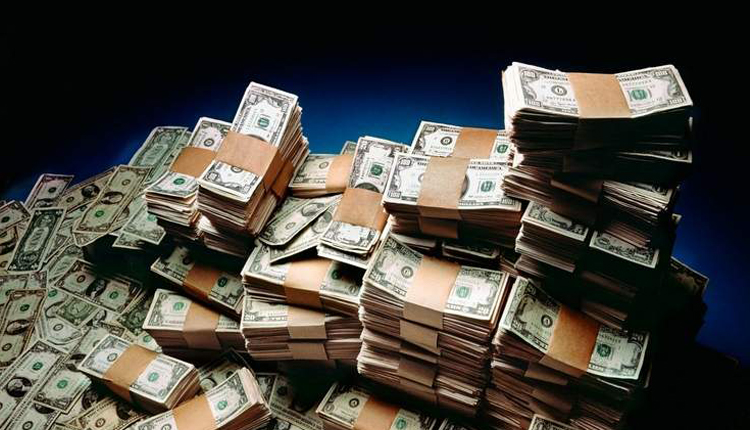Dollar held firm against its peers on Thursday, supported by bullish comments from the U.S. Federal Reserve chairman, which affirmed expectations for at least two more interest rate hikes this year.
In closely watched congressional testimony on Tuesday and again on Wednesday, Fed Chairman Jerome Powell said he believed the United States was on course for years more of steady growth, and carefully played down the risks to the U.S. economy of an escalating trade conflict.
Meanwhile, the widening trade rift between China and the United States knocked the yuan to a one-year low in both the onshore and offshore markets.
The dollar index versus a basket of six major currencies was little changed at 95.021 after hitting a three-week high of 95.407 overnight.
The euro was a shade firmer at $1.1650 after dipping about 0.2 percent on Wednesday, during which it brushed a 16-day low of $1.1602.
The rise in U.S. Treasury yields, notably those in the short end, amid the possibility of further rate increases helped support the dollar. The two-year Treasury yield stood near 2.624 percent, its highest since August 2008 scaled on Wednesday.
“With the Fed poised to hike further, currency market focus is shifting back towards the spread between the U.S. two-year yield -which is now well over 2 percent- and those of other countries, like Japan,” said Takuya Kanda, general manager at Gaitame.Com Research Institute.
The Fed has been ahead of its peers in normalizing monetary policy. This has pushed the U.S.-Japan two-year yield spread to its widest in a decade, while the U.S.-German two-year yield spread was the broadest in roughly 30 years.
Against the Japanese yen, the dollar was down 0.15 percent at 112.685 yen.
The U.S. currency was seen to have been nudged off a six-month of 113.14 on recent trade-related headlines. China’s Ministry of Commerce said on Wednesday it would have to take further measures to compensate for losses caused by the United States’ tariffs on steel and aluminium.
U.S. President Donald Trump’s top economic advisor, Larry Kudlow, also said on Wednesday that he believed Chinese President Xi Jinping has blocked progress on a deal to end dueling U.S. and Chinese tariffs.
“Currencies that tend to be bought when markets turn risk off are the dollar and the yen, so the yen would strengthen against the dollar while the dollar would strengthen against other currencies,” said Yukio Ishizuki, senior currency strategist at Daiwa Securities.
Amid the bubbling trade tensions the Chinese yuan extended losses to touch a fresh one-year low of 6.779 per dollar in offshore trading.
The Australian dollar gained on a stronger-than-expected local June employment data. The Aussie was up 0.4 percent at $0.7427 after going as high as $0.7444.
Sterling remained frail, hit the previous day by weak inflation data.
Ongoing political turmoil related to Britain’s plans to leave the European Union has also served as a lingering drag on the pound.
The pound traded at $1.3083, after hitting a ten-month low of $1.3010 on Wednesday.
The euro was up 0.07 percent at 89.08 pence against sterling, moving back toward the four-month high of 89.31 pence it hit the previous day.
Source: Reuters



